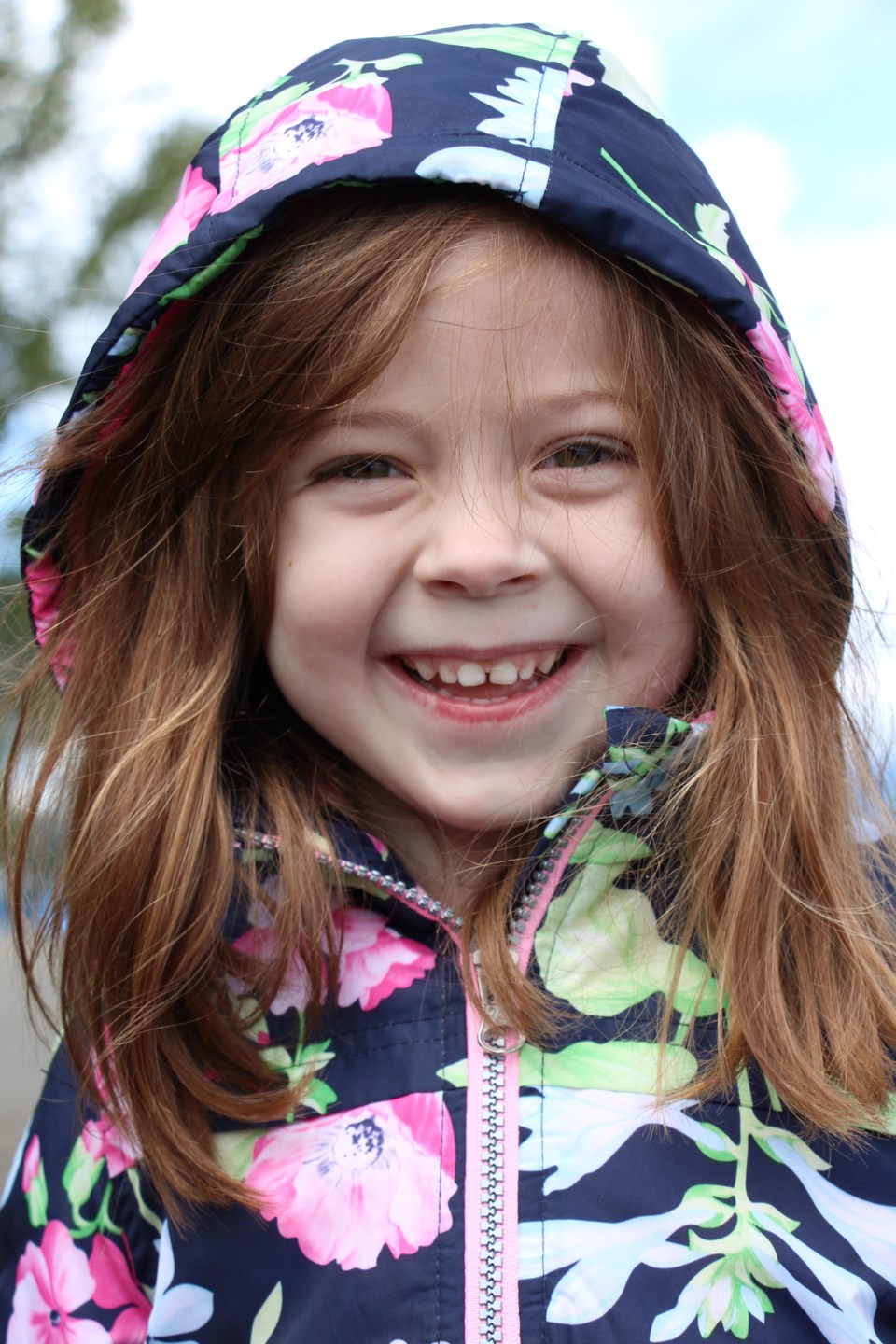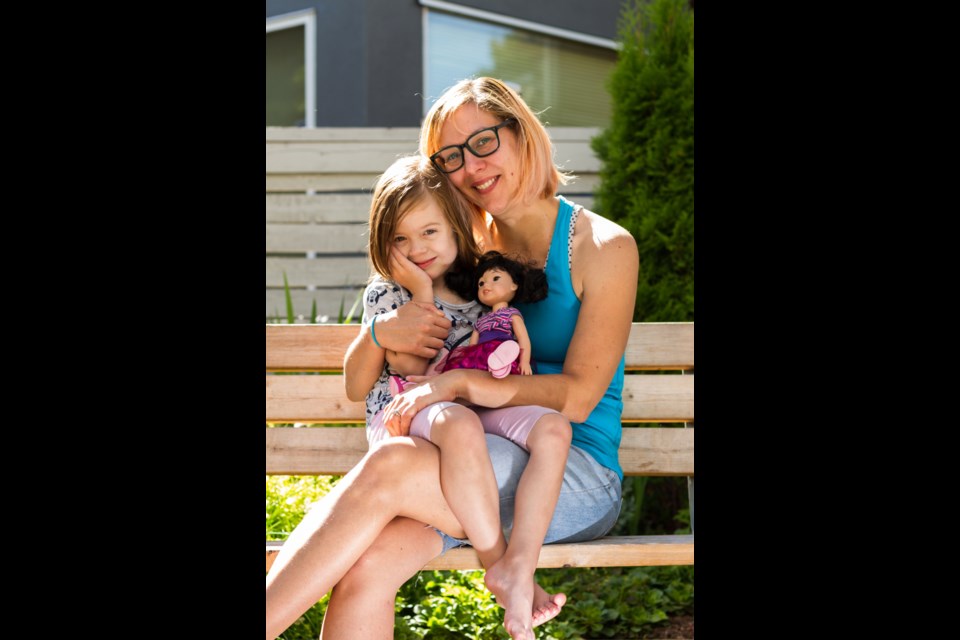Little Elsie Buck was a picky eater. No big deal for an infant, or so Amanda and Dave Buck thought. As did the doctors. But at about six months she stopped growing. In fact, she actually lost weight. That was a big deal.
“They never took our concerns seriously. As first-time parents, we were second guessing ourselves (wondering if) maybe it was normal,” says Amanda Buck.
But the pickiness persisted. Eventually, the New Westminster family was sent to the renal clinic at B.C. Children’s Hospital, which ordered some tests, including one with an ophthalmologist.
After the exam, the eye doctor said, “Oh yeah, the crystals are there. She has cystinosis.”
What? Wait? What’s cystinosis?
“He expected me to know what that meant,” says Buck.
She didn’t. Doctors at the renal clinic had not told her they suspected cystinosis and it could be confirmed by an eye test.
That night, the Bucks hit the internet trying to find out what the heck cystinosis was. They couldn’t turn their eyes away from the computer when they realized just how dire a disease their 15-month-old had.
Cystinosis is a rare genetic, metabolic disease. Both parents must have the unusual gene that passes it along, and even then there’s only a 25 per cent chance their offspring will be afflicted. It’s so rare only about 2,000 people in the world have it, and Buck only knows of three in British Columbia, including Elsie. Cystinosis attacks a number of organs. The first to feel its effects are usually the kidneys and the eyes.
Medication is extremely costly, and so is the research to find an improved treatment or a cure. That’s why Buck has joined forces with Amanda Leigh, a young woman in New York state with cystinosis. They have self-published a book telling the stories of those with the disease. The proceeds go to the Cystinosis Research Network.

Elsie is a cute five-year-old now with a sweet smile and about to go into kindergarten at École Qayqayt Elementary. But she needs a rigid regimen of medication just to survive. Through it all, her family has run the gamut of exhausting emotions.
“Dealing with it was definitely difficult,” admits Buck. “I would say sometimes I still don’t think I’ve really properly dealt with it. It’s so heartbreaking to have something happen to your daughter.
“I would feel guilty about the feelings I had, like I was robbed of something. I pushed that aside and focused on her and getting her better. I didn’t even think about me. That kind of careened into something else.”
Then she got pregnant again. It wasn’t planned, so they were actually relieved to have the difficult decision about whether or not to risk having another child taken out of their hands. The relief was even bigger after they found out their son, Linden, who was born two and a half years ago, did not have cystinosis. However, Buck had postpartum depression.
“That’s when I had to stop and take a look at what I needed too, and take care of myself,” says Buck. “Eventually I just got to the point where I realized I couldn’t just ignore the bad things. I had to actually acknowledge them and say, ‘yeah, this actually sucks, this is hard,’ instead of just trying to put on a brave face and look at things positively.”
Elsie’s kidney disease is now under control. They make regular visits every three months to the renal clinic, and the Bucks are constantly monitoring her levels to make sure she’s taking the right dose of supplements and her main medication, Cystagon. Elsie has taken growth hormones so she’s average height now, but still really skinny.
Buck says a transplant is probably an eventuality as most kids have kidney failure at about age 10. She adds transplants usually happen when they’re in their teens, but there are some in their 20s who haven’t had one.
There’s a new drug approved by Health Canada, she says, that is still going through regulatory reviews. It would mean taking the medicine once every 12 hours instead of every six. That would eliminate the nightly 1:30 a.m. alarm the Bucks have endured for the past four years.
They’re also hoping Pharmacare will cover the new drug because its annual cost can reach as high as $250,000, depending on how many pills the patient takes. At $38 per pill, the bill adds up quickly. Currently Elsie downs 24 Cystagon tablets daily.
“She knows that she’s different. She knows there’s something about her genetic makeup that means she has to take her medications and that her brother and her parents don’t have to,” says Buck. “Sometimes it makes her feel special. Sometimes she’ll kind of brag to people about it.”
Buck laughs because Elsie can confidently say the name of her blood pressure medication but regular words trip her up. “She still can’t pronounce birthday, but Spironolactone, no problem.”
Home and the playground is one thing. School is another. Elsie starts kindergarten in September, and mother Buck is terrified. She tried to get a head start on the transition with the school before summer holidays, but they told her they’d figure out in September.
“She’s going to have to take some medication at school, and I don’t know how that’s going to happen,” says Buck. “This is life-saving medication (that school officials) are going to have to make sure she takes at exactly the right time.
“It tastes awful. She doesn’t like taking it, so someone’s going to have to make sure she takes it. She should be getting eye drops (to stop crystals from forming on her corneas), so someone’s going to have to do that.”
Buck also notes Elsie has to make many trips to the toilet and because the medication leaves an odour, she’s worried about the possibility Elsie will be bullied.
“I might have to get my mama bear claws out to make sure the school takes me seriously,” says Buck, although she admits Elsie may be more ready than she is for kindergarten.
“She’s kind of looking forward to it, too. You can tell she wants her independence a bit, to start her own path.”
On top of all her fretting, Buck has kept busy blogging (elsinosis.com) about the trials and tribulations of cystinosis. A while back she liked a kids book about diabetes, so she put out feelers to the cystinosis community about developing a similar one. Leigh replied saying she would participate if it was stories about dealing with the disease. Buck liked the idea, so she found the writers and Leigh packaged their stories.
Some were written by parents or siblings, others by adults with the disease. Buck’s contribution was a blog she’d written about Linden and the effect his sister’s cystinosis has on him.
Strength: Lives touched by cystinosis is available online for $20US ($25.25 Cdn) through CreateSpace or Amazon.



